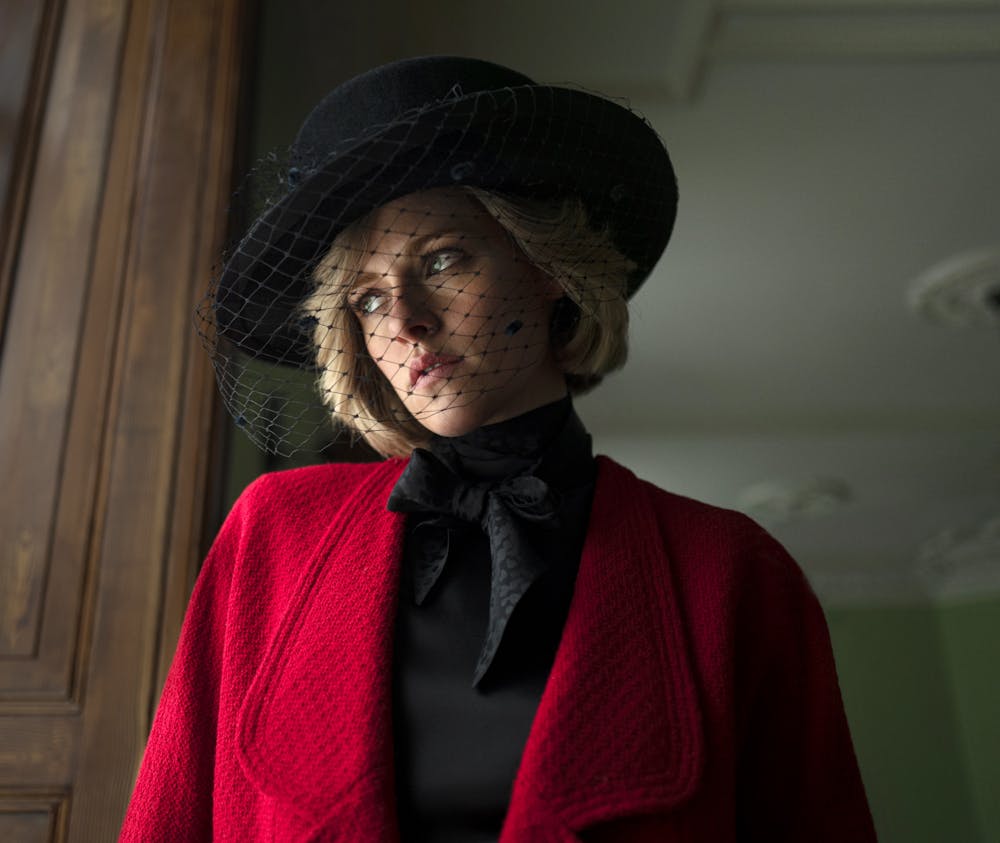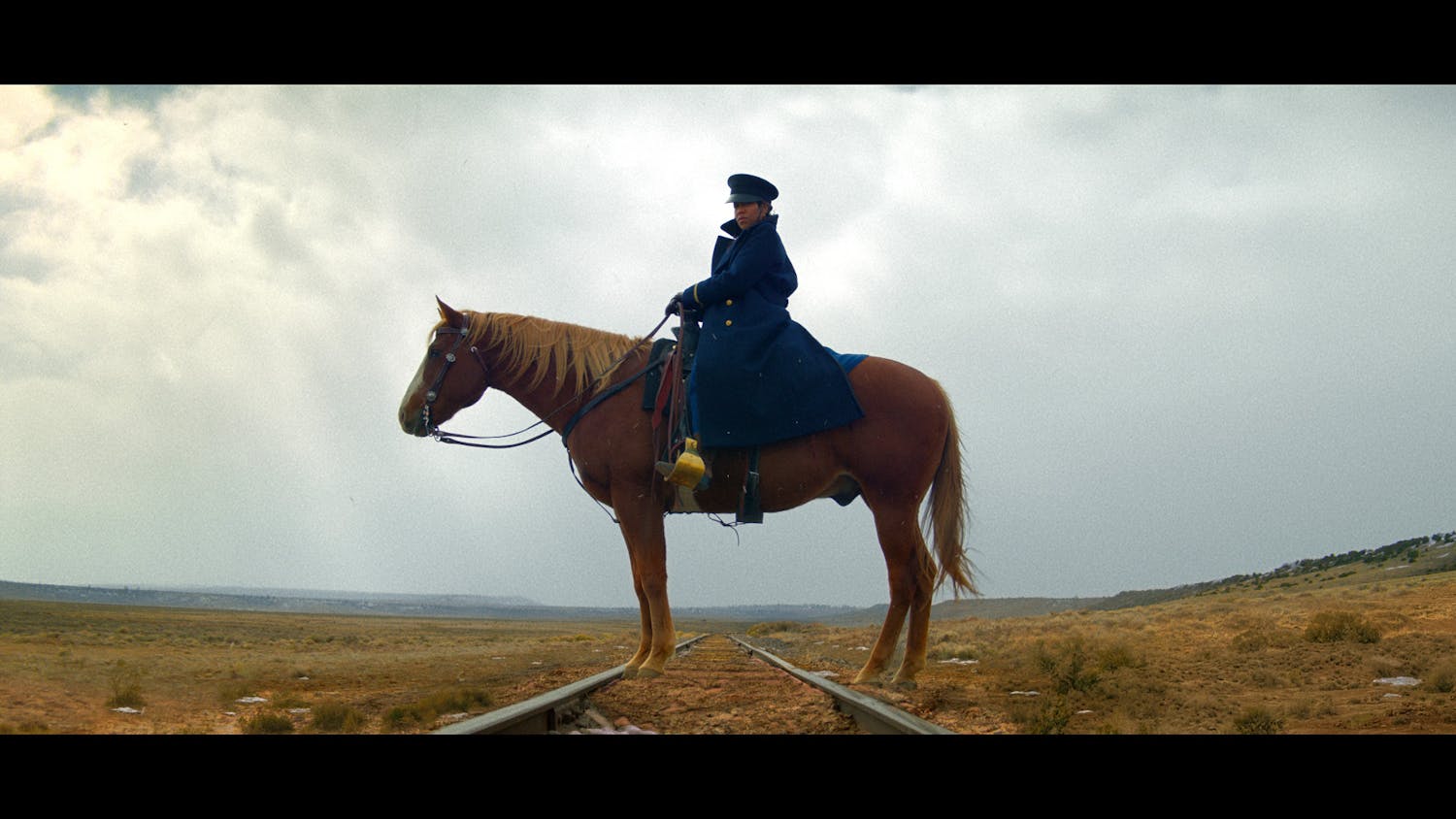Diana, Princess of Wales, is undoubtedly one of the great pop culture icons of modern history. Her glamour and philanthropy followed by an untimely and tragic death — all set against the backdrop of British royalty — yield a truly idiosyncratic and fascinating figure to explore. Diana’s story is long and complex, epic and tragic, but Pablo Larraín’s “Spencer,” titled after her maiden name, does not intend to tell that all-encompassing story. Instead, it sticks to just three eventful days in the life of the princess: Christmas Eve, Christmas Day and Boxing Day 1991.
In “Spencer,” almost entirely set within the grounds of the Queen’s Sandringham Estate in Norfolk, we see Diana, played by Kristen Stewart, fully come to terms with her fraught relationship with both her husband Charles, Prince of Wales (Jack Farthing), and the institution of the Crown as a whole.
The estate serves as an excellent backdrop for Diana’s inner turmoil and takes on a role not unlike that which could be found in a psychological horror film. Diana is constantly reminded that, in the estate, everyone can hear anything you say and see everything you do if you are not excruciatingly careful. Lead servant of the estate Major Alistair Gregory (Timothy Spall) is seemingly omniscient. Since his military service, Gregory has upheld an unflinching dedication to the Crown. Throughout the film, he uses this dedication much to Diana’s dismay, continuously trailing her as she walks the estate grounds. In many ways, he symbolizes the grasp of the Crown that Diana is trying so hard to escape from.
In Diana’s own bedroom, she is told to constantly keep her curtains closed, as there are paparazzi camping outside in hopes to capture intimate shots for the tabloids. Diana continuously defies these orders to the point that the curtains get sewn shut. She then cuts at the thread with wire cutters to re-expose herself to the outside world. Diana is not allowed to pick her own clothes or dress herself, and when she defies orders once again by wearing her Boxing Day dress to Christmas mass, the staff at the estate erupt in chatter over how unhinged she has become.
Outside of Diana, the film focuses primarily on the staff rather than the other royals. But young Princes William (Jack Nielen) and Harry (Freddie Spry) are often featured. They highlight how Diana’s obligations to the Crown affect her mental health and keep her from the things she loves. Prince Charles is only featured in about three scenes, where he is painted as the leading cause of his wife’s declining mental state. The Queen (Stella Gonet) also appears briefly to show how Diana’s antics are tearing at the traditions of the monarchy.
The unconventional decision to decenter the other Royals ultimately pays off, as the lack of a familial circle surrounding Diana puts her loneliness and detachment in the spotlight. The staff of the estate serve as an excellent proxy for the Royals; in many ways, they are more steadfastly attached to the traditions of the Crown than the Royal Family themselves.
Along with Gregory, the chef Darren (Sean Harris), dresser Maggie (Sally Hawkins) and second dresser Angela (Lauren Benson) round out the main supporting characters, and they all deliver in their roles. Darren is immensely dedicated to serving the kitchen and by affiliation, the Crown, but he clearly has a soft spot for Diana. Maggie is shown to be the princess’s most trusted companion and the pair discuss everything going on in her life. Charles doesn’t like this chumminess, and he orders Maggie back to London and sends for Angela instead — a much colder figure.
Then there is the strangest aspect of the film: the surrealist scenes of Diana’s visions of Anne Boleyn (Amy Manson), the beheaded second wife of King Henry VIII. Supposedly a distant relative of Diana’s, Boleyn’s story clearly resonates with the princess, predominantly due to the fact that they both had unfaithful husbands and felt trapped within the royal system. Boleyn’s barbaric fate serves as an extreme example of where Diana feels her life is currently heading, but the scenes invoking Boleyn disrupt the otherwise natural flow of the film. While these scenes are clearly thematically important, the tonal dissonance between the surreal and real takes the viewer out of the narrative and dampens the overall effect.
Although “Spencer” takes place five years before the tragedy that took Diana’s life, that future moment is in many ways the most integral part of this story. Only through the viewer’s knowledge of that infamous night in Paris do the Boleyn allusions and tabloid anxieties have any emotional resonance. And while it is certainly clever on the part of screenwriter Steven Knight to reference Diana’s untimely death, his nods can also be painfully on the nose. Lines of dialogue revolving around the dangers of the paparazzi feel as if they need to be completed by a wink to the camera, which greatly undermines the gravity of many scenes.
“Spencer” is a fascinating, albeit flawed, character study of an icon. The screenwriting can be borderline stilted and the references heavy handed, but the cinematography by Claire Mathon and score by Jonny Greenwood contribute to an ethereal aesthetic that completely enthralls the viewer. The film is an excellent exploration of a global figure trying to navigate the private and public aspects of royal life — and her ultimate failure at doing so.

Finn Kirkpatrick was the senior editor of multimedia of the Brown Daily Herald's 134th editorial board. He is a junior from Los Angeles, California studying Comparative Literature and East Asian Studies. He was previously an arts and culture editor and has a passion for Tetris and Mario Kart.





